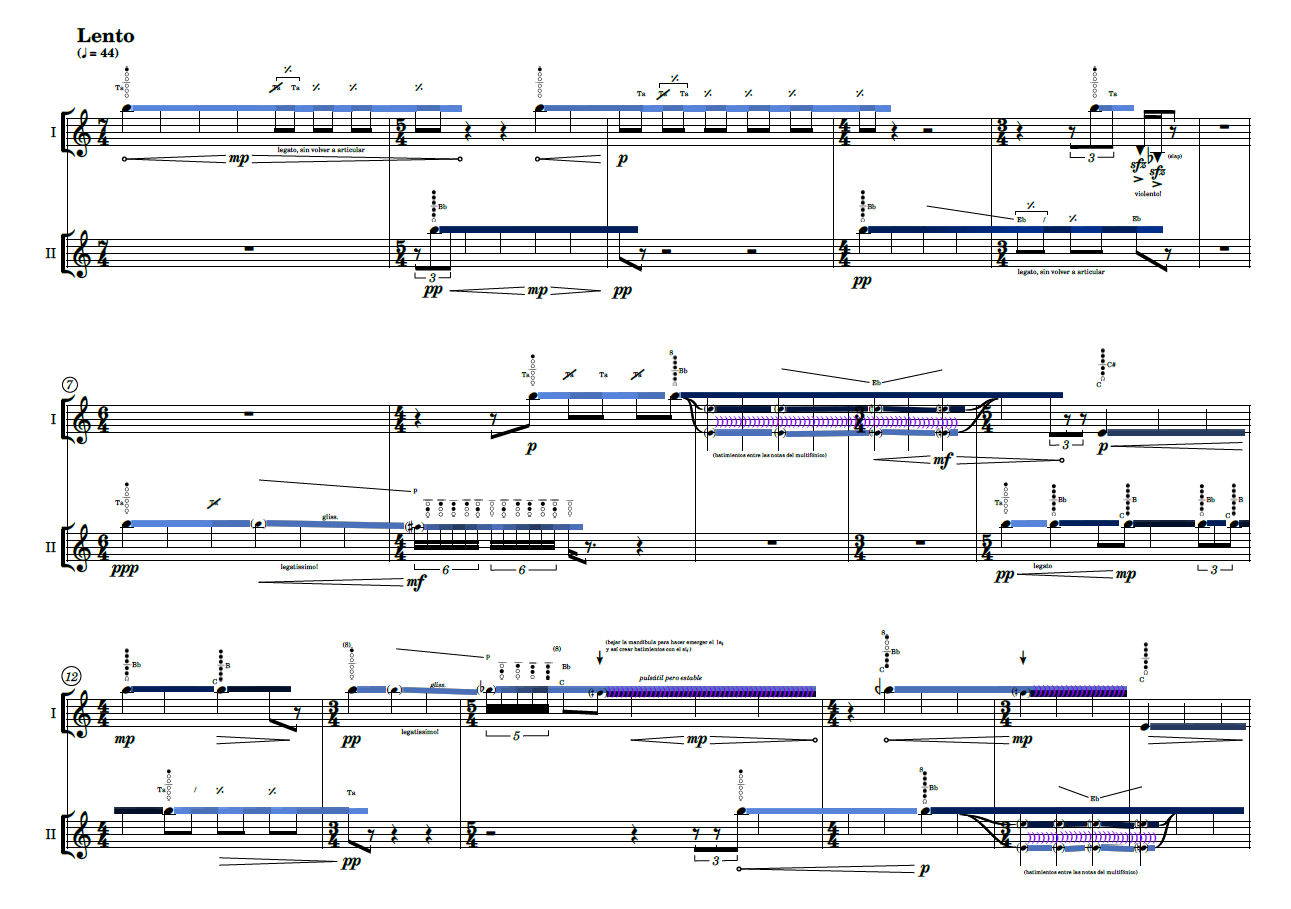for two saxophones (2021)

The color of sound is one of the focal points of every musician’s experience. Every sound potentially has an “ideal” color, and the search for that ideal can be a lifetime’s work. As he advances in this search, the interpreter enters a path that distinguishes him from other interpreters; so much so that interpretation can become – in the first instance – the arduous process of selecting and refining the desired color for each of the notes of a score.
In JÝI (“rainbow” in the Guaraní language) I seek to delve into this phenomenon, choosing the saxophone due to its spectral potential (i.e. the richness of harmonics determined by its conical shape) and due to the great variety of fingerings allowed by its complex mechanism.
Each “alternative” fingering produces the same note with a different “color,” but a superficial study of such sounds makes possible only a random and banal use. However, by radically deepening the study of alternative fingerings (carefully analyzing and classifying them), a whole world of musical possibilities unfolds. Colors are used in the score to graphically represent the spectral content of each fingering, and in this way it becomes possible to structure a sound dimension in which each timbre has a specific function.
If composing is not only “putting things together” but, above all, “putting them in relation to each other” (v. Lachenmann), then dealing strictly with the color of sounds is a possible path for composition. Oscillating between different balances of contrast and mimesis, the two saxophones envelop us in their auras, reminding us of the ineffable nature of color: a web whose indefinable threads do not capture definitions, but only relations.

